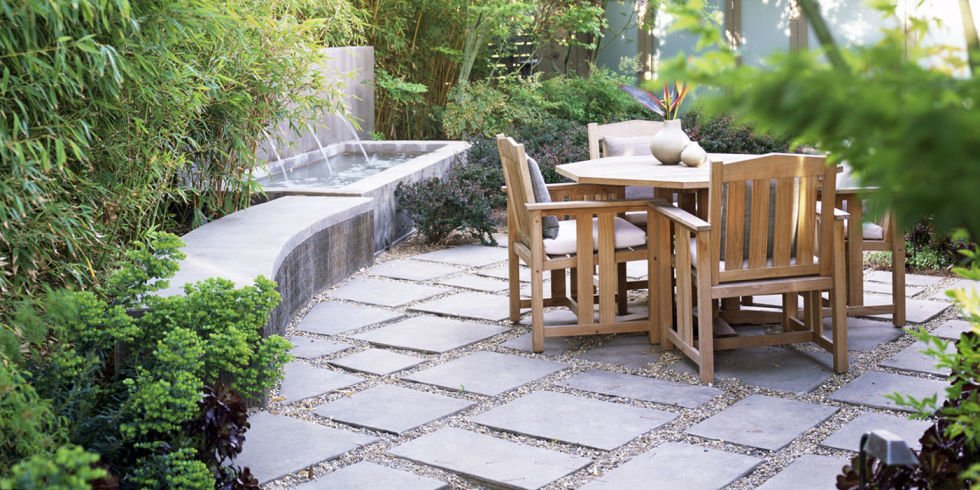
Choosing the right material for patio flooring can be tricky. From decking, bricks, paving or gravel – which is the best option for your garden?
TERRIFIC TIMBER
Decking is great for many situations such as uneven surfaces, slightly sloping sites and sunny areas. But in a shady spot the porous nature of wood means that rainwater may make the deck slippery. And if it doesn’t dry quickly, the damp may speed up the rotting process (although most decking is guaranteed for at least 10 years).
It’s more expensive but hardwood decking looks slicker than softwood. It also lasts longer and the colours are richer. You can get the look of hardwood without the high cost with Western Red Cedar, which is a dark-coloured softwood. To create a more bespoke design, look for non-standard plank widths.
A newly laid deck will look like a palace to mice and rats. But you can keep them out by using side boards. Laying down a semi-permeable membrane on the ground below the deck helps, as does putting chicken wire behind the side boards, which can be dug into the ground.
BRICK WORKS
Bricks are excellent for shady areas. Moss will grow in the soil between the bricks, which is great for a shabby-chic, country-cottage look. Otherwise, look for brick-effect paving that’s frost resistant.
SET IN STONE
The range of paving is enormous. It can be difficult to choose from a brochure picture or a single sample. So the best way to be sure of getting the look you want is to view a design insitu. Visit big DIY stores and garden centres that have paving installed in their show gardens.
When you’ve found a style you like, as well as noting the type of paving, pay attention to the way it’s laid and decide which arrangement you prefer.
- Look at different sizes of paving and also the spaces between them – are they close up or a few millimetres apart?
- If there’s mortar between the slabs, how high is it? Is it level with the paving or set down?
- What colour is the mortar? Pale or dark mortar can completely change the look of the paving.
PRACTICAL GRAVEL
Gravel and other aggregates are relatively inexpensive options that are cheaper to buy and install. There’s also no problem with a gravel patio being slippery when wet, rotting in damp conditions or having drainage issues.
Consider the colour, size and shape of the aggregate. Unless you want a specific effect, a warm, pale colour such as off-white Cotswold chippings or a honey-coloured gravel will look stylish and bounce the light around.
When laying gravel, a good rule of thumb is to lay it on at a depth of 3 times the size of the gravel. So for 6mm gravel it should be around 2cm deep, with 10mm gravel lay it 3cm deep.
FINISHING TOUCHES
Integrate a new patio into your garden as a whole by planting around it with gaps for entrances. This will make all the difference to the look of your scheme – whichever material you choose.
[Source:- House Beautifull]






